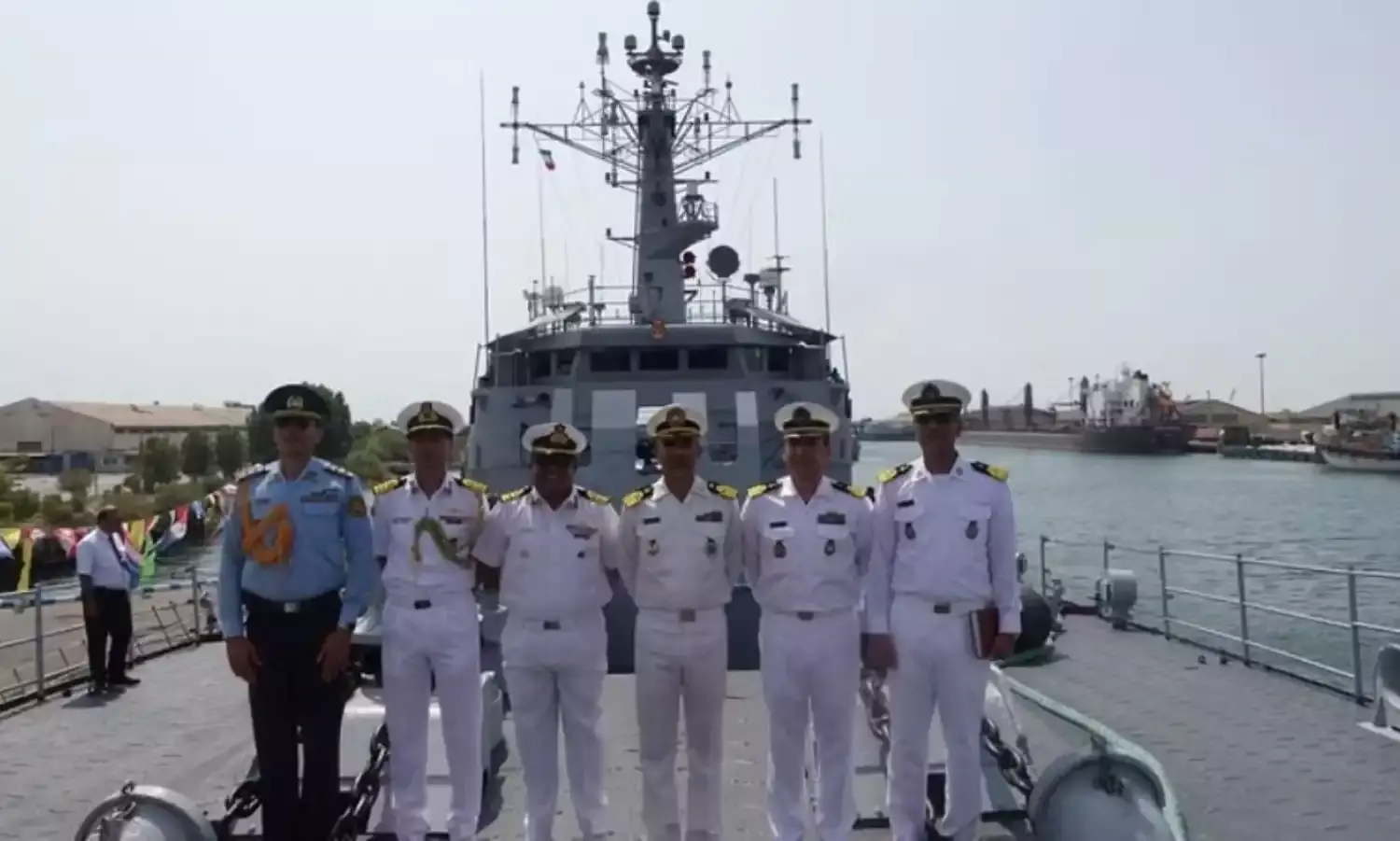Indian Naval Ships in Iran
No mystery there

The Persian Gulf is important to India as some 55 percent of India’s energy requirements are ex imports through the Persian Gulf.
Any disruption to these shipping lanes could severely impact India's economy, as 80 percent of its energy needs are sourced from abroad.
The safety of these maritime routes is paramount for India, especially with the significant share of energy imports flowing through the Strait of Hormuz, a crucial chokepoint that handles around 30 percent of the world’s seaborne oil shipments.
The news about three Indian naval ships docking at a port in Iran was first reported by the Hindi newspapers in India. This was followed by the English newspapers reporting that the three Indian naval ships, namely INS ‘Shardul’, INS ‘Tir’ of the Indian Navy and ICGS ‘Veera’ of the Indian Coast Guard had docked at Iran’s Bandar Abbas Port, as a “strategic” response to escalating war in the Middle East.
The above Indian naval deployment, linked with Prime Minister Narendra Modi’s message to all warring nations (and their supporters) that dialogue (not war) is the way out, was a strategic message to the world to lay off - cocking a snook at the world at large. In fact, Modi had also spoken to Israeli Prime Minister Benjamin Netanyahu also, probably asking him not to bomb Bandar Abbas while Indian Ships were there.
In the backdrop of the Third Quadrilateral Meeting of Foreign Ministers of China, Iran, Pakistan Russia, which concluded on September 27, there is speculation that this deployment is to not let Iran lean away from India.
Another view is that with oil prices already rising to $75 per barrel, the option of Iranian oil is being kept open; although this appears absurd considering that India should have not given up the next door cheaper import of Iranian oil in the first place.
But none of the above cited reasons appears to be the case although this deployment comes at a critical time as tensions escalate between Israel and Iran, and when Netanyahu has hinted at potential military action against Iran, stating that Israel would "pay" for the missile strikes in Israel. The fact is that all these three Indian naval vessels are “training ships” with cadets on board.
In February 2024, the Iranian warship ‘Dera’ participated in the Milan 2024 Naval Exercise hosted by India. This was followed by Iranian training ships ‘Bushehr’ and ‘Tonb’ making a port call in Mumbai in March.
The Indian naval vessels in Iran in the instant case are part of the continuing bilateral effort between India and Iran to strengthen maritime ties. India-Iran collaboration, particularly in maritime security and interoperability training, is essential for maintaining stability in the Persian Gulf.
The training mission of INS ‘Shardul’, INS ‘Tir’ and ICGS ‘Veera’ with the Iranian Navy would have been coordinated and finalised months in advance. It is coincidence that Israel-Iran tensions rose to a higher level while they had docked at Bandar Abbas.
There is also a view that Israel may be annoyed with this Indian deployment but the US will be happy as the Iranian Navy would be indirectly bottled up and will not take offensive actions in the Straits of Hormuz against US vessels, notwithstanding how harebrained this hypothesis is on the face of it. But we must acknowledge that if Netanyahu decides to hit Bandar Abbas, he won’t care whose ships are in the harbour.
The Israel-Iran War is set to escalate. The US wants to use Israel as its proxy to wage war in the Middle East, and wants Netanyahu to attack Iran’s nuclear facilities. Concurrently. Israel wants the US drawn into the war on Iran, which is quite logical. Israel has upped its attacks in Lebanon and Gaza and is all set for similar punitive strikes in Iran – the makings of World War III.
The latest news is that an Armenian station has detected a 4.6 magnitude seismic event in Iran during the night of October 6/7, 2024, with researchers noting that it lacked a seismic compressional wave, making the event more consistent with an explosion rather than an earthquake.
The seismic activity was centered in the Kavir desert near the town of Aradan, and comparisons between typical earthquake vibrations and nuclear tests suggest this event more closely resembles a nuclear test. Notably, no aftershocks were recorded, which is another clue pointing to an explosion rather than natural seismic activity.
The explosion is thought to be similar in magnitude as the Sedan US Military underground nuclear test of a 104-kiloton nuclear device conducted on July 6, 1962, which resulted in a crater 1,280 feet wide and 320 feet deep. The explosion created a cavity that the surface soil collapsed into; in that, it was more of a subsidence crater than an impact crater.
Whatever be the case, this is likely to accelerate Israel/US attacks against Iran. Hopefully, the Indian naval training ships would be out of the region by then; otherwise, they could get hit, suffer casualties, and it may not be possible to pass the blame on to the Houthis.
Lt General Prakash Katoch is an Indian Army veteran. Views expressed are the writer’s own.



